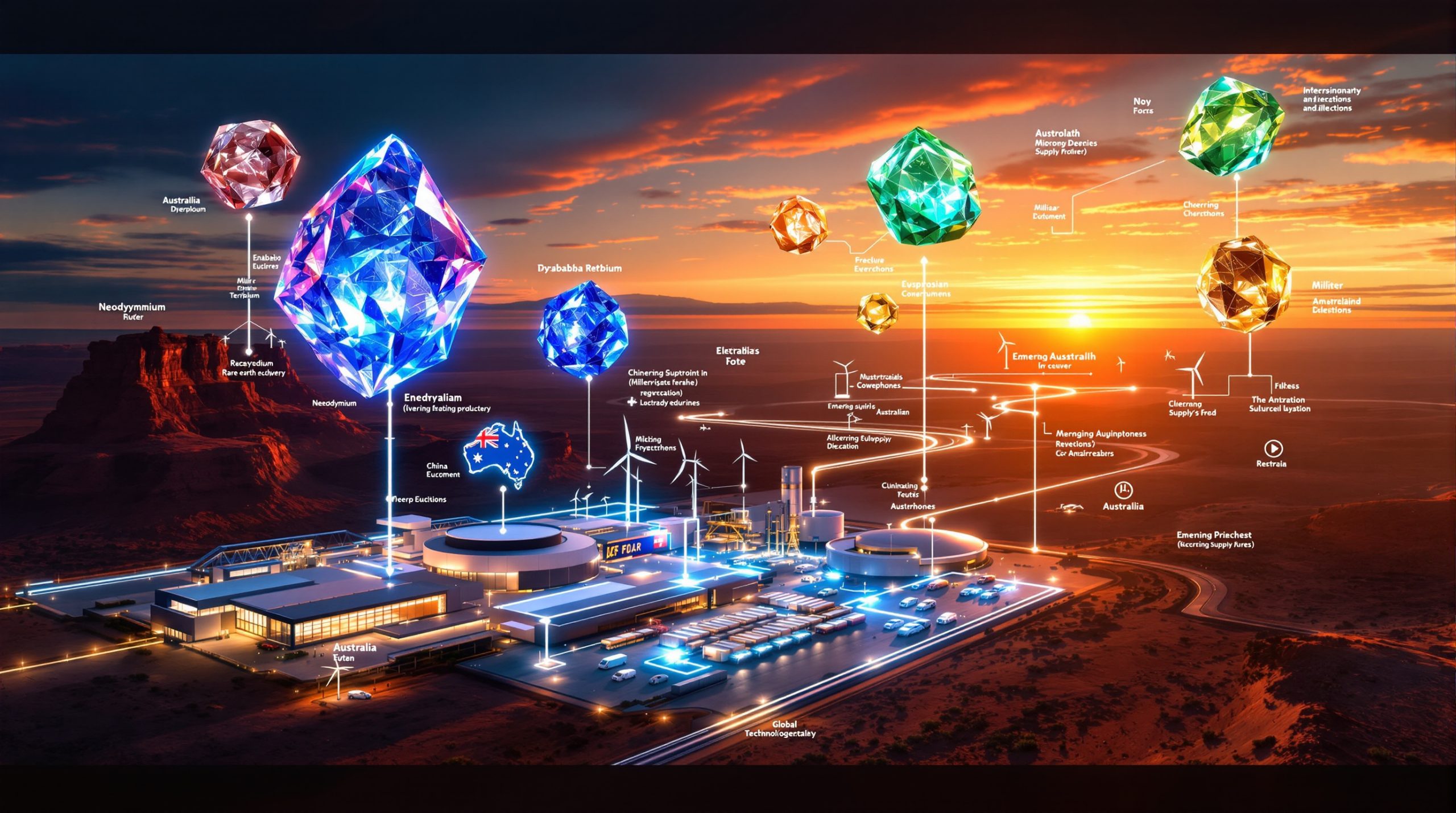Global Copper Production Q2 2025: Market Leaders, Growth Trends, and Output Analysis
What Were the Top Copper Production Results in Q2 2025?
The second quarter of 2025 revealed significant shifts in global copper production, with the top 16 producers collectively outputting approximately 3.5 million tonnes. BHP Group maintained its leadership position with 516,200 tonnes, followed by Freeport-McMoRan (436,809 tonnes) and a resurgent Codelco (365,000 tonnes). The quarter demonstrated a mix of strategic growth, operational challenges, and successful project ramp-ups across the industry.
The competitive landscape continues to evolve as producers adapt to changing market conditions, with the top producer generating more than five times the output of the 16th-ranked company. This production gap highlights the significant scale advantages enjoyed by industry leaders as the global copper supply forecast continues to fluctuate.
Production Leaders by the Numbers
| Rank | Company | Q2 2025 Production (tonnes) | YoY Change |
|---|---|---|---|
| 1 | BHP Group | 516,200 | +2.24% |
| 2 | Freeport-McMoRan | 436,809 | -7.14% |
| 3 | Codelco | 365,000 | +18.12% |
| 4 | Zijin Mining | 282,429 | +10.36% |
| 5 | Southern Copper | 239,980 | -1.03% |
| 6 | Rio Tinto | 229,000 | +15.00% |
| 7 | CMOC | 183,026 | +9.85% |
| 8 | Glencore | 176,000 | -21.04% |
How Did the Top Three Copper Producers Perform?
BHP Group: Strategic Growth and Record Performance
BHP strengthened its market leadership with a 2.24% year-over-year increase, reaching 516,200 tonnes in Q2 2025. This growth stemmed from several notable achievements:
- Escondida Mine: Achieved 17-year production high with record concentrator throughput and improved ore grades
- Spence Mine: Delivered record quarterly production following optimization initiatives
- Copper South Australia: Set new quarterly production records, demonstrating successful integration of former OZ Minerals assets
- Portfolio Diversification: Strategic expansion efforts continued to yield positive results across multiple operations
BHP's performance underscores its commitment to operational excellence and portfolio optimization. The company has leveraged its technical expertise to maximize output from existing assets while successfully integrating acquired operations.
Freeport-McMoRan: Navigating Temporary Headwinds
Despite maintaining second position with 436,809 tonnes, Freeport-McMoRan experienced a 7.14% year-over-year decline due to:
- Grasberg Complex: Lower ore grades resulting from recalibrated draw point flow modeling
- Processing Timing: Increased in-process inventory related to the commissioning of a new copper smelter
- South American Operations: Cerro Verde faced lower ore grades, impacting overall output
- Financial Performance: Strong copper prices ($4.42/lb) and cost efficiencies helped offset production challenges
Industry analysts note that Freeport's production challenges appear to be primarily technical and temporary rather than indicative of fundamental operational issues. The company's focus on long-term asset optimization positions it well for future quarters, despite recent fluctuations in copper price predictions.
Codelco: Remarkable Turnaround and Growth
Chile's state-owned Codelco demonstrated impressive recovery with 365,000 tonnes produced, representing an 18.12% year-over-year increase. Key factors included:
- Structural Projects: Successful ramp-up of major development initiatives, particularly the Chuquicamata Underground Mine
- Operational Improvements: Resolved previous difficulties at El Teniente division, leading to improved throughput
- Production Efficiency: Enhanced recovery rates and operational stability across multiple assets
Codelco's turnaround is particularly significant given its importance to Chile's economy and the global copper market. The company's successful transition of legacy open-pit operations to underground mining demonstrates its commitment to sustainable long-term production.
Which Companies Showed the Most Significant Growth in Q2 2025?
MMG: Industry-Leading Expansion
MMG delivered the quarter's most impressive growth at 54.30%, producing 140,368 tonnes. This exceptional performance was driven by:
- Khoemacau Mine: Botswana operation reached near full capacity throughout the entire quarter
- Las Bambas: Maintained stable operations and consistent ore throughput in Peru
- Operational Efficiency: Improved recovery rates and processing optimization
MMG's growth trajectory demonstrates how strategic investments in emerging copper regions can significantly impact a company's market position. The Khoemacau project represents an important diversification into the Kalahari Copper Belt, a region gaining increased attention from producers seeking geographical diversification.
Vale: Strong Recovery and Development Success
Vale achieved a 17.81% increase, producing 92,600 tonnes in its best Q2 since 2019:
- Sossego Mine: Significant grade improvements from 0.98% to 1.21%
- Salobo Operation: Reached and maintained nominal capacity
- Voisey's Bay: Successful expansion ramp-up contributed to overall growth
- Operational Stability: Reduced maintenance downtime across key assets
Vale's copper production growth complements its traditional focus on iron ore, highlighting the company's commitment to portfolio diversification. The improved performance at Sossego demonstrates how grade variations can significantly impact production volumes, as detailed in Vale's production and sales results for Q2 2025.
Rio Tinto: Strategic Growth and Project Development
Rio Tinto posted 15.00% growth with 229,000 tonnes produced:
- Oyu Tolgoi: Continued successful ramp-up of the high-grade underground mine in Mongolia
- Kennecott: Higher grades and improved recoveries at US operation
- Operational Excellence: Enhanced processing efficiency and asset utilization
Rio Tinto's growth in copper production aligns with its strategic pivot toward future-facing commodities. The Oyu Tolgoi underground mine represents one of the industry's most significant growth projects, with the potential to become one of the world's largest copper mines when fully operational.
What Challenges Impacted Major Producers in Q2 2025?
Glencore: Operational Hurdles and Planned Maintenance
Glencore experienced the largest decline among major producers at -21.04%, attributed to:
- Collahuasi Mine: Planned lower grades at the Chilean operation
- Antamina: Scheduled maintenance impacted production volumes
- African Copper Assets: Ongoing operational challenges across multiple sites
- Strategic Positioning: Focus on long-term asset optimization despite short-term output reduction
Mining engineers familiar with Glencore's operations note that the company is navigating a transitional period at several assets, with investments in mine development expected to yield improved grades and volumes in future quarters.
Anglo American: Restructuring and Grade Variations
Anglo American saw an 11.58% production decrease due to:
- PGM Demerger: Q2 2025 figures only covered April-May production following corporate restructuring
- Collahuasi: Lower grades impacted output volumes
- Positive Developments: Quellaveco showed 4.7% growth and Los Bronces demonstrated strong quarter-over-quarter performance
Anglo American's production decline reflects both corporate restructuring and the natural variability of mining operations. The company's Quellaveco mine in Peru continues to perform well as it approaches stable operations following its commissioning in 2022, according to their Q2 2025 production report.
How Are Mid-Tier Producers Performing in the Copper Market?
Emerging Strength and Consistent Performance
Several mid-tier producers demonstrated notable results:
- Ivanhoe Mines: Achieved 11.11% growth with 112,009 tonnes produced
- Antofagasta: Delivered 3.09% growth with 160,100 tonnes
- CMOC: Posted 9.85% growth with 183,026 tonnes
- Zijin Mining: Recorded 10.36% growth with 282,429 tonnes
Mid-tier producers are increasingly demonstrating their ability to compete with major miners through strategic project selection and operational excellence. Ivanhoe's Kamoa-Kakula complex in the Democratic Republic of Congo exemplifies how high-grade deposits can enable rapid production growth.
Operational Challenges for Select Producers
Some mid-tier companies faced production headwinds:
- Teck Resources: Slight 1.18% decline to 109,100 tonnes despite Quebrada Blanca ramp-up progress
- KGHM Polska: 1.91% decrease to 174,900 tonnes due to processing challenges
- Nornickel: 4.77% reduction to 103,800 tonnes as the company prioritized other metals in its portfolio
These moderate declines highlight the operational complexity of copper mining and the impact of strategic decisions on production outcomes. For diversified miners like Nornickel, production variations often reflect metal prioritization based on market conditions.
What Do Q2 2025 Results Reveal About Global Copper Supply Trends?
Regional Production Dynamics
The Q2 2025 results highlight several important regional trends:
- South American Dominance: Chilean and Peruvian operations continue to represent the largest share of global production
- African Expansion: Significant growth from operations in Botswana and the DRC
- Asian Development: Chinese producers like Zijin Mining showing consistent growth
- North American Stability: US operations maintaining steady output despite grade fluctuations, with ongoing US copper investment insight showing potential for future growth
Regional production patterns reflect both geological endowment and investment patterns. The growing contribution from African operations is particularly noteworthy, as it represents a geographical diversification of global copper supply.
Production Technology and Efficiency Improvements
Technological advancements are increasingly influencing production results:
- Underground Automation: Mines like Oyu Tolgoi and Chuquicamata demonstrating productivity gains
- Processing Innovations: Enhanced recovery rates contributing to output increases
- Operational Digitalization: Remote monitoring and predictive maintenance reducing downtime
- Energy Efficiency: Lower energy consumption per tonne produced improving cost structures
Industry experts point to automation and digitalization as key factors enabling production growth even as average ore grades decline globally. These technological advances are helping extend mine life and improve productivity across the sector.
Supply Chain and Market Implications
Q2 2025 production data reveals important market dynamics:
- Supply Constraints: Despite growth from some producers, overall supply remains tight
- Project Development: New mines and expansions progressing but not yet offsetting growing demand
- Grade Variability: Fluctuating ore grades continuing to impact production consistency
- Strategic Positioning: Major producers investing in growth projects to address anticipated future copper demand surges
Copper market analysts note that the production increases observed in Q2 2025 are not sufficient to create oversupply conditions, particularly given growing demand from electrification, renewable energy, and AI infrastructure development.
What Are the Key Takeaways from Q2 2025 Copper Production Data?
Industry Resilience and Strategic Growth
The Q2 2025 results demonstrate several important industry characteristics:
- Operational Adaptability: Producers effectively navigating grade variations and maintenance requirements
- Strategic Investments: Major companies advancing expansion projects to address future supply needs
- Technical Innovation: Continued implementation of advanced mining and processing technologies
- Market Responsiveness: Production adjustments aligned with copper price movements and demand signals
The copper mining sector continues to demonstrate resilience despite numerous operational challenges. Companies are increasingly focused on technological innovation and operational optimization to maintain production levels and manage costs while exploring copper investment strategies.
Production Outlook and Future Considerations
Looking beyond Q2 2025, several factors will influence copper production:
- Project Pipeline: New mines and expansions scheduled to come online in late 2025 and 2026
- Demand Drivers: Growing requirements from renewable energy, electrification, and AI infrastructure
- Operational Challenges: Declining ore grades at mature mines requiring technological solutions
- Sustainability Focus: Environmental considerations increasingly influencing production strategies
Industry forecasts suggest that while copper supply will continue to grow in the coming years, it may struggle to keep pace with accelerating demand, creating potential for sustained market tightness. Environmental permitting timelines and water availability remain critical constraints for project development in key producing regions.
FAQs About Global Copper Production in Q2 2025
How did Chilean copper production perform in Q2 2025?
Chilean copper production showed mixed results, with Codelco achieving 18.12% growth while operations like Collahuasi experienced planned lower grades. Overall, Chile maintained its position as the world's largest copper-producing nation.
Which company showed the most significant production growth?
MMG demonstrated the most substantial growth at 54.30%, primarily due to its Khoemacau mine in Botswana operating at near full capacity and stable operations at Las Bambas in Peru.
What factors contributed to Glencore's production decline?
Glencore's 21.04% production decrease resulted from planned lower grades at Collahuasi, scheduled maintenance at Antamina, and ongoing operational challenges at its African copper assets.
How are new copper projects impacting global supply?
New and ramping projects like Oyu Tolgoi underground, Quellaveco, and Khoemacau are beginning to contribute meaningful production volumes, though their impact is not yet sufficient to create oversupply conditions in the market.
What role did ore grades play in Q2 2025 production results?
Ore grade variations significantly influenced Q2 results, with companies like BHP benefiting from higher grades at Escondida while others like Freeport-McMoRan faced temporary grade challenges at operations like Grasberg.
Further Exploration:
Readers interested in learning more about global copper production trends can also explore related educational content available on MiningVisuals.com, which offers additional perspectives on mining industry developments and commodity market analysis.
Disclaimer: This article is for informational purposes only and should not be considered financial or investment advice. Production data has been compiled from various company reports and industry sources. Readers are encouraged to consult official company reports and independent financial advisors for comprehensive and up-to-date information.
Ready to Spot the Next Major Copper Discovery?
Discovery Alert's proprietary Discovery IQ model delivers instant notifications when significant copper discoveries are announced on the ASX, transforming complex geological data into actionable investment insights. Visit our discoveries page to see how major mineral finds can generate substantial returns for early investors.




